Last updated: August 27, 2019
Article
Subsistence: Tribal Nutrition & Health
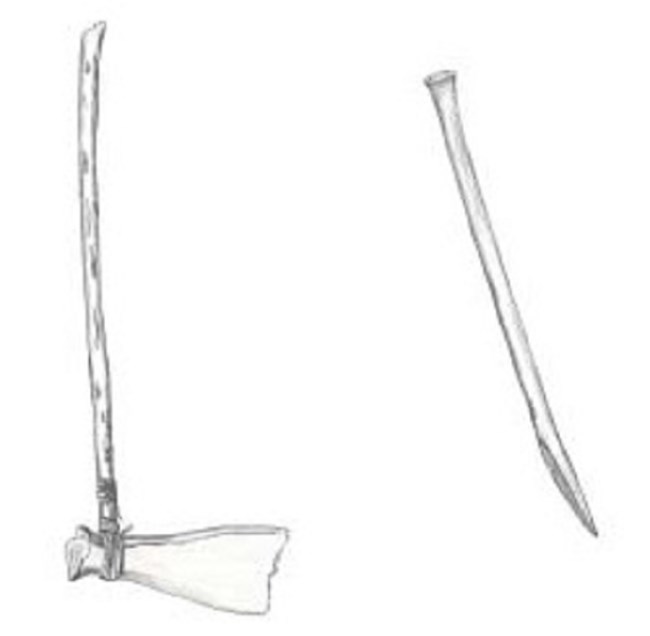
NPS Photo
Women's Influence
The women at Knife River played an integral role in the economic well being of their peoples by producing the crops used for consumption and trade. European traders and nomadic tribes traveled great distances to trade animal hides and furs, obsidian for arrowheads, dentalium, shells, horses, and metalware for the vegetable crops of the Knife River women. The women prepared the fields for planting by breaking up the soil with agricultural instruments they constructed out of wood and animal bones. They hauled rocks, logs, and debris off the land to ensure that nothing would obstruct the growth of their crops. When the fields were ready, the women planted their corn, beans, squash, and sunflowers. All of the women’s efforts were accompanied by prayers and songs. Prayers were offered to the earth prior to beginning work on the fields. Women prayed, sang, and talked to their fields every morning. As the crops grew, women sang songs to the plants. They treated the plants as living beings who needed nurturing. The work that the women performed was the basis of the tribe’s economy.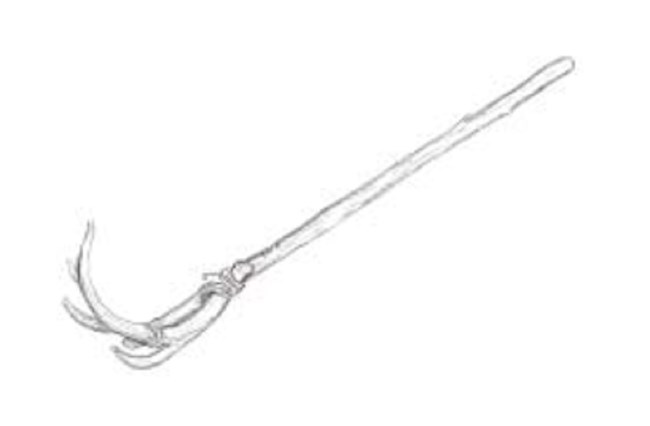
NPS Photo
Plant Watchers
As the plants grew, young girls sat on platforms built beside the fields. They protected the plants and sang to them. They kept watch over the corn and neighboring growth like one would watch over little children. Young men longing to snatch ears of corn were prevented from doing so under the watchful eyes of the young women. The presence of the young corn guardians also discouraged the pesky crows from pecking at the crop.Processing Foods
After the corn and other crops were harvested, the surplus was prepared for storage. The corn was dried on a high rack built outside the lodges. Some corn was left on the cob to dry while other corn was sliced off the cob and dried. The beans were separated from their shells and dried. The squash was sliced, strung, and hung to dry on the racks. The racks were built high to prevent dogs and other animals from devouring the foods. The sunflower seeds were also dried. Once dried, the foods were placed in containers within the earth lodge and a larger amount was placed in a cache pit.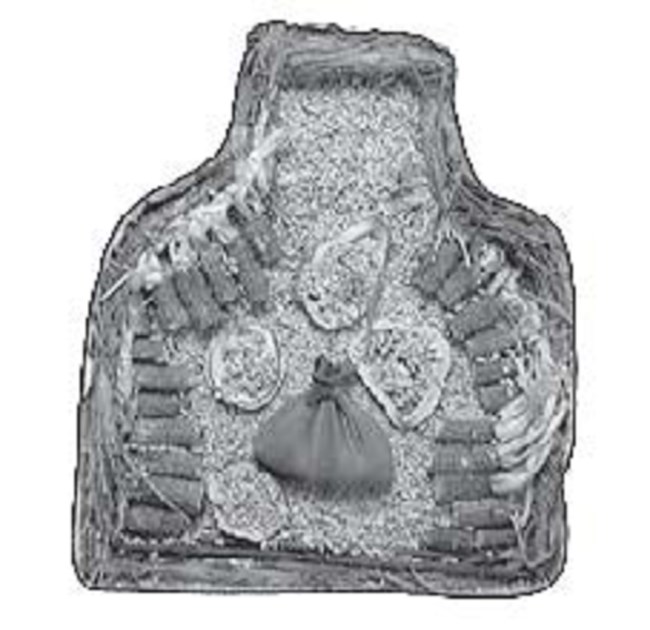
NPS Photo
Food Storage
The cache pit was constructed by digging a large, circular hole in the ground and lining it with sticks and grass. The foods (corn, beans, squash, wild turnips, sunflower seeds) were strategically placed in the cache pits to make them accessible. A person descended into the cache pits with a ladder constructed out of wood. The hole at the top of the cache pit was covered over with sticks and grass and earth to camouflage it from outsiders. Cache pits were located both inside and outside of the earthlodges.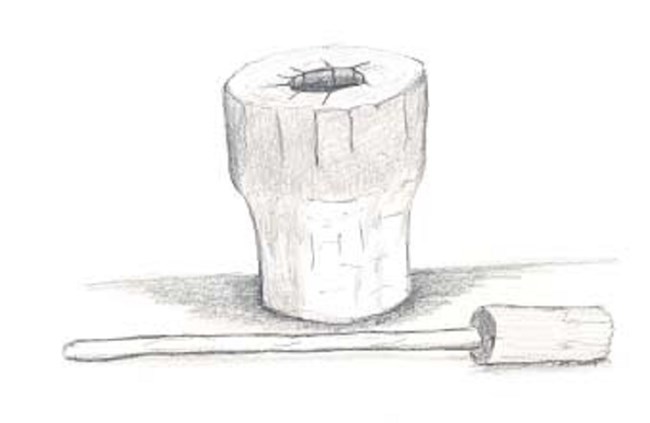
NPS Photo
Food Preparation
The dried foods were reconstituted by being boiled in water. The Knife River villagers had different ways of cooking their food. Food was cooked in clay pots and fresh meat was broiled on a stick over a fire pit. The ingredients were mixed together or cooked separately. Wild berries were used in some recipes as was fresh meat. It was also sliced thin, smoked, and dried. It was mixed with the vegetables at times. The dried meat was also carried for consumption when hunting or scouting. It was often pounded with sunflower seeds and juneberries or chokecherries, then dried to make a patty that was easily transported for a snack. Wild turnips were dug in large quantities, peeled, and stored for consumption in the winter. Most often the turnips were added to a soup.Men's Contributions
Meat was contributed by the men of the tribe through their hunting, trapping, and fishing skills. Men might go out individually or in large hunting parties to look for buffalo, deer, antelope, bear, or other game animals. Rabbits and birds were also a part of the villager’s diet as well as fish and other aquatic life. Prior to setting out to hunt, prayers and songs were offered to the animal spirits so that they would come willingly to the hunter. The animal offered its life so that the people might live. The animal then would continue to live through the people who consumed it. Fish were caught with bone fishhooks and with the fish traps. The fish traps had special songs and prayers that were used when setting up the traps. A fish trapping medicine bundle was owned by individual men who had the traps. The men were kept busy with their ways of bringing food to the villages. The men also performed spiritual ceremonies to keep life in balance for the tribe.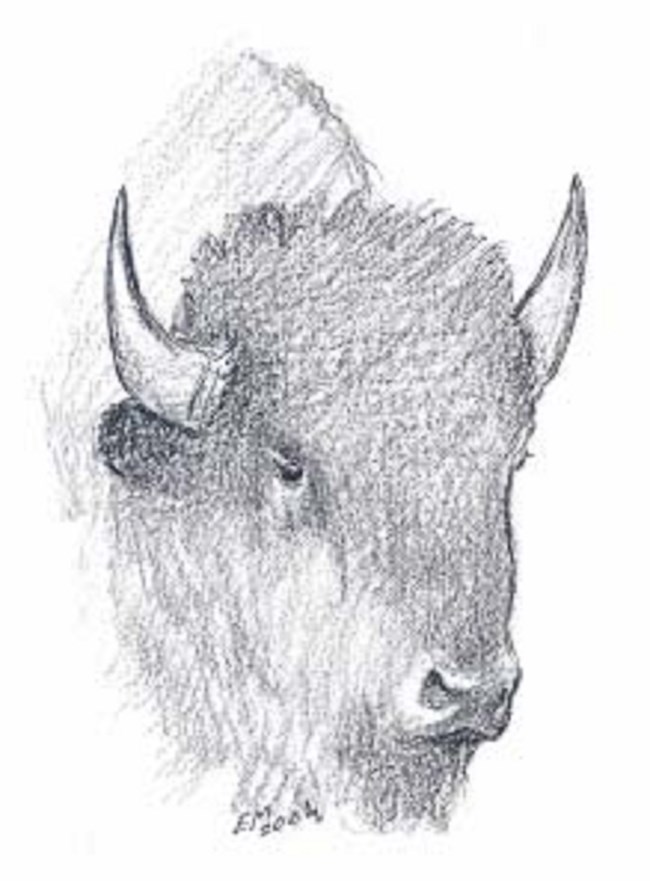
NPS Photo
Hunting and Foraging
The systems used by the Hidatsa, Mandan, and Arikara in their agriculturally based society were quite complex. Ideas of planting times, techniques, nurturing the crops, and harvesting and storing were all important to ensure adequate supplies of food. This food base wassupplemented by hunting and foraging.
Because of their huge numbers, the buffalo were an important part of the food supply of the agriculturally based Mandan, Hidatsa and Arikara. There were a variety of other animals that
furnished meat for the Hidatsa, Mandan and Arikara: the black-tailed (mule) deer, the white tailed deer, elk, big horn sheep, antelope. These animals were important not only for food, but also because their hides could be tanned and used for clothing.
The butchering of antelope was similar to that of deer. The liver and kidneys were frequently eaten raw, while the butchering was being done. Although the hide was important, usually the freshly butchered meat was protected with it until transported back to the village.
Bird hunting was done by younger boys with the bow and arrow. If a boy hunted alone, he kept all of his game. If two boys hunted together, each was entitled to the game of the other. If there were more than two, the one who picked up the game kept it. Birds such as mourning doves, bob-o-links, blackbirds and other smaller songbirds were hunted. Meadow larks were not usually hunted, since there were some fears of eating them.
Birds were given to either the boy’s grandmother or mother, who would place them in the fireplace ashes and cover them with coals. When the roasted birds were removed from the ashes, the feathers and skin would fall off, the entrails would be removed, and the birds were ready to eat. They were considered a delicacy. Small game such as gophers, prairie dogs and rabbits were hunted and were relished as being good food.
The people who lived along the Missouri River were not as dependent upon fishing as some
of the tribes along the Columbia River and coastal areas, but fish did form a part of their diet. The main method of procurement was the fish trap. Only certain men who had purchased the right made these fish traps. These rights were sacred. Traps could be made by the ones with the right to do so for other’s use, but this would also have to be purchased. In general, the traps were four willow mats consisting of one hundred willows each, attached to twelve willow poles stuck in the mud of the bottom of the river in an area where the water was about three feet deep. Sticks with leaves left on were put near the trap. Rotten meat was attached to the gate of the trap to attract the fish. When the leaves of the trap shook, the trap was full and the gate was closed. The man would then enter the trap and scoop out the fish using cone-shaped willow baskets.
There was no attempt to preserve fish; they were eaten at the time they were caught. Fish trapping was undertaken in the fall and catfish were the main catch. Usually the fish were boiled without skinning. This preparation not only produced a welcome change from their usual corn and meat but also created a strong broth which was enjoyed with the meal.
A main dish made of dried corn pounded into a coarse meal, boiled with meat, was the usual fare. Other dishes were made with beans, squash, sunflowers, and berries. Whenever a guest entered the lodge, food was served. Food was kept beside the fire so that anyone could eat when they were hungry.
Foods were dried to preserve them for later use: dried meat, corn, beans, squash, sun flower seeds, turnips, berries, and cherries. The meat would be cut into chunks, then sliced in thin layers. These long, thin pieces would then be hung on racks in the sun to dry. At times the meat might be partially roasted and dried over a fire. The meat was cut thin for quick drying. Smoking the meat was used to flavor and further protect the meat.
To make pemmican (a high energy, light, compact food), dried meat and chokecherries were pounded and then mixed with tallow and bone marrow. Dried berries such as juneberries were also used because of their sweet flavor. Pemmican could be stored for long periods of time.
Not much was wasted in food processing. For example, the bone fat would be extracted by splitting the long bones and boiling. The grease floating on the surface of the water would be skimmed off and collected or the water might be cooled allowing the grease to harden. Bone grease was often stored in a section of the large intestine of the buffalo. The bone broth that was left was usually used as a warm drink with meals.
Box elder sap provided a drink with a flavor similar to maple syrup. In addition, there were a number of teas: one from the inner bark of the elm tree, another from the bark of wild roses.
Subsistence Today
Indian men and women continue to pick wild berries for storage and to hunt deer and other wild game. Some families continue to dry the meat of deer, beef and buffalo (the Three Affiliated Tribes has its own buffalo herd). The meat is cut in long thin strips and hung to dry with a small smoky fire beneath. As the smoke rises, it softens and flavors the meat. Women still dry corn for use in corn soup.Grocery stores provide the bulk of the foods consumed by the Mandan, Hidatsa, and Arikara today. Depending on where they live, most tribal members travel to Minot, Bismarck, or Dickinson, North Dakota, to grocery shop. Low income families are eligible for the federal surplus food program, referred to as “commodities.” Many of the participants in the program are elders. Generally, tribal members buy and prepare their own food.
A traditional meal today is buffalo or beef, either boiled or roasted, squash, corn soup, fry bread, and juneberry pudding. Traditional meals are usually prepared for ceremonies, funerals, and for elders. Children and teenagers often enjoy fast food when they go to a larger town or city. On the favorite food list of the Mandan, Hidatsa, and Arikara people is the Indian Taco, which is made from fry bread, covered with a mixture of fried hamburger and beans, lettuce, tomato, and cheese covered with salsa. Some people prefer to add onions, sour cream, and black olives. Indian Tacos are often sold at Pow Wows, fundraisers, and other events like birthday parties.
